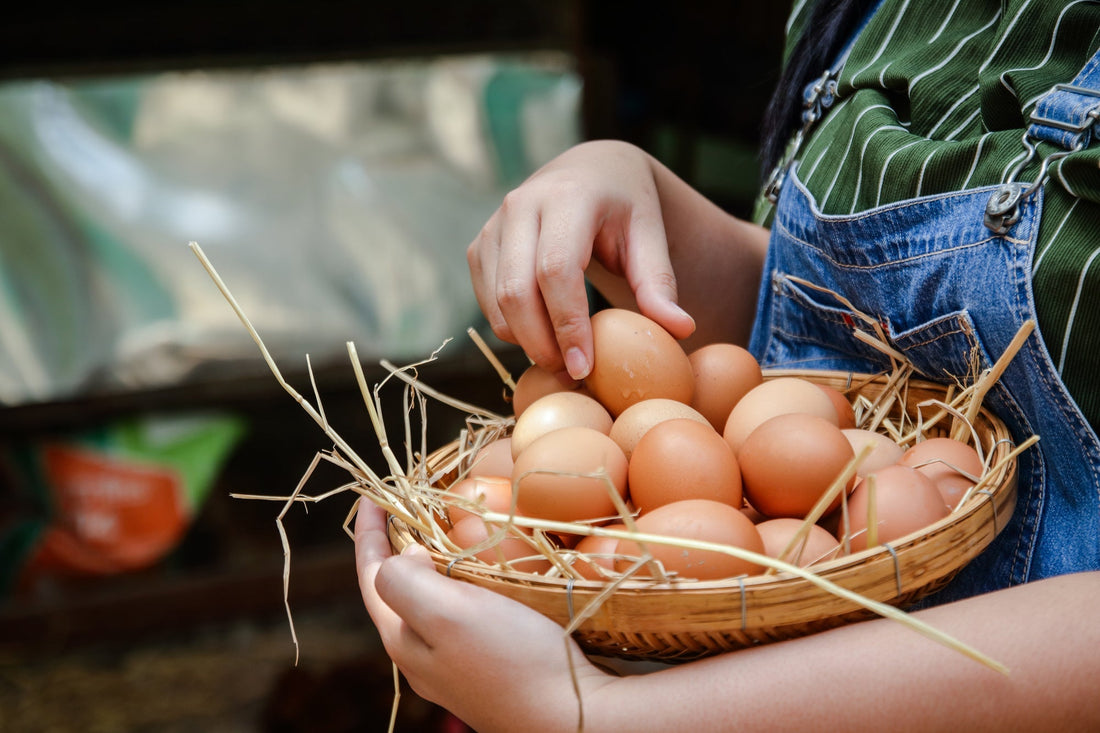For backyard chicken keepers and small-scale farmers, maintaining a steady supply of fresh eggs throughout the year can be a challenge. Many new chicken owners are surprised when their hens suddenly stop laying in winter or when external factors like molting and stress affect egg production. However, with proper management of lighting, nutrition, and flock health, you can help ensure your hens continue to lay eggs consistently through all seasons.
Understanding the Natural Egg-Laying Cycle
Hens naturally lay the most eggs in the spring and summer when daylight hours are longer. As daylight decreases in fall and winter, egg production tends to slow down or stop altogether. This is because a hen's reproductive system is triggered by light, specifically around 14-16 hours per day. By mimicking these natural conditions and optimizing their environment, you can keep your hens productive year-round.
1. The Role of Lighting in Egg Production
Light plays the most crucial role in a hen’s egg-laying cycle. Hens rely on photoperiods (length of daylight exposure) to regulate their reproductive hormones. Without sufficient light exposure, hens will naturally decrease their laying frequency, conserving energy during darker months.
How Light Affects Laying
Hens require at least 14 hours of daylight to maintain peak egg production. When daylight hours drop below 12 hours, the hen’s body interprets this as a signal to take a break from laying. This biological response is deeply rooted in their natural reproductive cycle.
Providing Supplemental Lighting in Winter
To counteract shorter days in fall and winter, you can add artificial lighting in the coop. Here’s how to do it effectively:
-
Choose the Right Bulb: Use a warm LED or incandescent bulb that mimics natural sunlight. Avoid harsh fluorescent lights that may cause stress.
-
Timing is Crucial: Set a timer to turn the light on early in the morning (before sunrise) so the hens get 14-16 hours of light daily. Gradually adjust the schedule to avoid sudden disruptions.
-
Avoid Overexposure: More than 16 hours of light can stress hens, negatively impacting their health and potentially leading to burnout.
By ensuring your hens receive consistent lighting, you can help them maintain a steady laying pattern, even during the shortest days of the year.
2. Nutrition: The Foundation of Consistent Egg Production
A well-balanced diet is essential for strong eggshells, healthy hens, and a consistent laying schedule. If a hen is not receiving the right nutrients, her body will prioritize survival over reproduction, leading to fewer eggs or eggs with weaker shells.
Essential Nutrients for Laying Hens
-
Protein: Laying hens need 16-18% protein in their diet to support egg production. Insufficient protein intake can lead to smaller eggs or reduced laying frequency.
-
Calcium: Calcium is vital for strong eggshells. A lack of calcium results in brittle, soft-shelled, or misshapen eggs. Offer oyster shells or crushed eggshells as a supplement.
-
Omega-3 Fatty Acids: Helps improve egg quality and yolk color. Can be found in flaxseed or fish meal.
-
Vitamins and Minerals: Ensure feed contains vitamin D3, phosphorus, and magnesium for optimal egg-laying health.
-
Grit: Helps with digestion, especially for free-range hens. Since chickens lack teeth, grit aids in breaking down food inside their gizzards.
Feeding Strategies to Maintain Egg Production
-
Use a layer feed formulated specifically for laying hens. This ensures they receive the necessary nutrients in proper proportions.
-
Offer a variety of fresh fruits, vegetables, and grains as supplemental treats. However, avoid feeding them excessive amounts of treats high in carbohydrates or fat, as this can lead to obesity and decreased laying.
-
Ensure constant access to clean, fresh water—dehydration can immediately halt egg production.
3. Keeping Your Flock Healthy and Stress-Free
A stressed or sick hen will not lay regularly. Keeping your flock healthy is just as important as providing proper lighting and nutrition. Ensuring a low-stress environment will promote optimal egg production and overall hen well-being.
Reducing Stress Factors
-
Maintain a Clean Coop: A dirty environment leads to disease and parasites, which can stop hens from laying.
-
Provide Enough Space: Overcrowding causes stress. Each bird should have at least 4-5 square feet of coop space and ample outdoor room.
-
Minimize External Disturbances: Loud noises, predators, and frequent coop changes can cause hens to stop laying.
-
Handle Molting Periods Carefully: Molting (when hens lose old feathers and grow new ones) usually happens in fall and reduces egg production. Feed extra protein-rich treats like mealworms to help them recover faster.
Preventing Common Poultry Diseases
Diseases can devastate egg production. Watch out for symptoms of common poultry illnesses such as:
-
Coccidiosis: Causes diarrhea and weight loss. Prevent with proper hygiene and probiotics.
-
Marek’s Disease: A viral disease that can be prevented through vaccination.
-
Respiratory Infections: Can be caused by ammonia buildup from droppings. Keep coops well-ventilated and dry.
A proactive health management plan, including vaccinations, parasite control, and regular check-ups, will keep your hens laying consistently.
4. Seasonal Adjustments for Maximum Egg Production
Different seasons bring different challenges for egg production. Here’s how to adjust your flock’s care throughout the year:
Spring & Summer: Peak Laying Season
-
Allow hens plenty of outdoor time to forage for natural nutrients.
-
Keep water cool and fresh to prevent dehydration.
-
Provide shade and dust baths to prevent heat stress.
Fall: Preparing for Molting and Seasonal Changes
-
Expect a temporary drop in egg production as hens molt.
-
Increase protein intake to support feather regrowth.
-
Begin adjusting lighting schedules for winter months.
Winter: Maintaining Egg Production in Cold Weather
-
Add coop insulation to keep hens warm without overheating.
-
Continue supplemental lighting to maintain laying cycles.
-
Feed high-energy foods like scratch grains to help maintain body heat.
5. Choosing the Best Layers for Year-Round Eggs
Certain chicken breeds are better suited for consistent egg production. If you’re building a flock for year-round laying, consider these breeds:
-
Rhode Island Red – Hardy and lays around 250-300 eggs per year.
-
Leghorn – Excellent layer of white eggs, even in winter.
-
Plymouth Rock – Reliable, friendly, and lays 200-280 eggs annually.
-
Australorp – Holds the world record for egg-laying, producing 250+ eggs per year.
-
Sussex – Docile and steady layer, even in cold weather.
Maintaining year-round egg production is achievable with a combination of lighting, proper nutrition, and overall flock health. By ensuring your hens receive enough daylight, feeding them a nutrient-rich diet, and preventing stress and disease, you can enjoy a consistent supply of fresh eggs regardless of the season.

